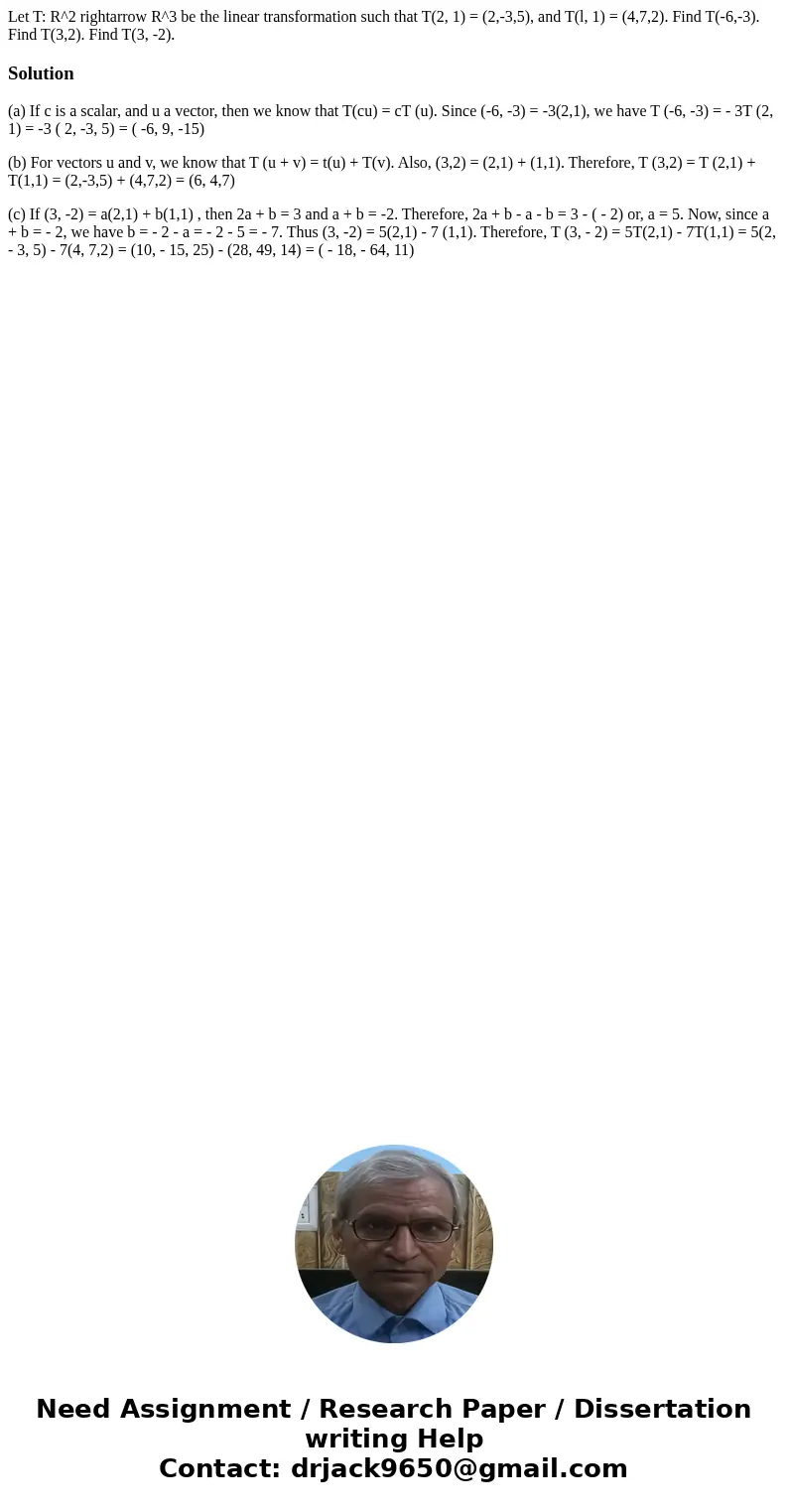Let T R2 rightarrow R3 be the linear transformation such tha
Let T: R^2 rightarrow R^3 be the linear transformation such that T(2, 1) = (2,-3,5), and T(l, 1) = (4,7,2). Find T(-6,-3). Find T(3,2). Find T(3, -2). 
Solution
(a) If c is a scalar, and u a vector, then we know that T(cu) = cT (u). Since (-6, -3) = -3(2,1), we have T (-6, -3) = - 3T (2, 1) = -3 ( 2, -3, 5) = ( -6, 9, -15)
(b) For vectors u and v, we know that T (u + v) = t(u) + T(v). Also, (3,2) = (2,1) + (1,1). Therefore, T (3,2) = T (2,1) + T(1,1) = (2,-3,5) + (4,7,2) = (6, 4,7)
(c) If (3, -2) = a(2,1) + b(1,1) , then 2a + b = 3 and a + b = -2. Therefore, 2a + b - a - b = 3 - ( - 2) or, a = 5. Now, since a + b = - 2, we have b = - 2 - a = - 2 - 5 = - 7. Thus (3, -2) = 5(2,1) - 7 (1,1). Therefore, T (3, - 2) = 5T(2,1) - 7T(1,1) = 5(2, - 3, 5) - 7(4, 7,2) = (10, - 15, 25) - (28, 49, 14) = ( - 18, - 64, 11)

 Homework Sourse
Homework Sourse